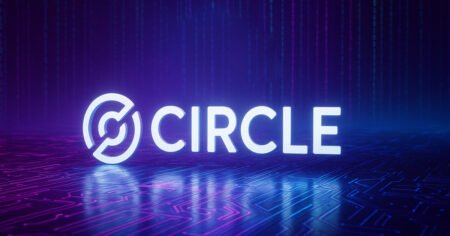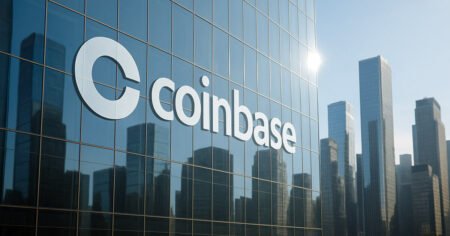The Rise of Blockchain-Native Assets in Crypto Derivatives Markets
As the crypto trading landscape evolves, platforms are increasingly incorporating blockchain-native assets to streamline operations and enhance collateral efficiency in derivatives markets. Notably, stablecoins like USDC and tokenized treasuries such as BlackRock’s USD Institutional Digital Liquidity Fund (BUIDL) are gaining traction among institutional investors looking for ways to optimize capital. These innovations represent a significant shift in the financial industry, blending stability, yield, and compliance to meet the demands of modern trading environments.
USDC’s Momentum in Futures Markets
On June 18, Coinbase Derivatives announced that it would accept USDC as collateral for margined futures, pending necessary approvals from the Commodity Futures Trading Commission (CFTC). This landmark decision by Coinbase reflects a growing trend to leverage stablecoins in traditional financial markets. Coinbase’s CEO Brian Armstrong highlighted the significance of this integration, emphasizing its potential to revolutionize the use of USDC in U.S. futures markets. The introduction of stablecoins like USDC can enhance liquidity and reduce volatility, thus making it a favorable choice for institutional players looking to manage their risk effectively.
Tokenized Treasuries Gain Ground
Simultaneously, the adoption of tokenized treasuries is becoming a notable trend in the derivatives market. On the same day that Coinbase made its announcement, Securitize, a digital asset firm, revealed that BUIDL could be used as collateral on platforms like Crypto.com and Deribit. BUIDL represents a short-term yield-bearing fund, backed by cash and U.S. Treasuries, and it currently manages a substantial asset pool of $2.9 billion. By enabling institutions to use BUIDL as margin, these platforms not only facilitate leveraged positions but also allow traders the opportunity to earn yield on their assets, thereby optimizing their capital usage.
Benefits of Blockchain-Native Assets
The rising use of USDC and BUIDL in crypto derivatives emphasizes several key advantages. First and foremost, these assets are engineered for near-instant settlement, a feature that enhances liquidity across both centralized and decentralized platforms. Carlos Domingo, CEO of Securitize, pointed out that tokenized treasuries improve capital efficiency and risk management, making them a valuable addition to the sophisticated trading venues of the industry. This shift towards efficient collateral provisioning supports the broader adoption of digital assets by institutional investors, who prioritize return on investment while maintaining risk controls.
Regulatory Landscape Supporting Innovation
The integration of blockchain-native assets is not just a market-driven phenomenon. Institutional adoption is also propelled by a supportive regulatory landscape. Following the recommendations from CFTC Acting Chairman Caroline D. Pham, firms have been encouraged to explore the utility of distributed ledger technology for non-cash collateral. Pham argued that leveraging such technologies could uphold market integrity, especially given the successful commercial instances of asset tokenization seen in Europe and Asia. These advancements help illustrate the potential for efficient collateral management and treasury operations, allowing institutions to adapt to increasingly digital finance environments.
Market Implications and Future Outlook
The momentum generated by USDC and tokenized treasuries signals a transformative phase in the derivatives marketplace. Their integration implies a growing acceptance and recognition of crypto-native innovations within mainstream finance. As more trading platforms embrace these assets, it can lead to enhanced price discovery, improved risk management, and a more transparent financial architecture overall. Institutional players are likely to further capitalize on these innovations, paving the way for a more resilient and efficient trading ecosystem.
Conclusion: A New Era in Crypto Derivatives
The growing acceptance of USDC and tokenized treasuries like BUIDL represents an important evolution in the crypto trading landscape. These assets offer a range of benefits, including enhanced collateral efficiency and yield generation opportunities, making them attractive to institutional traders. With a supportive regulatory environment and increasing market acceptance, blockchain-native assets are set to play a central role in the development of modern financial markets. As they redefine the dynamics of collateral management and risk assessment, institutions that adapt to these changes are likely to lead in the competitive landscape of crypto finance.

















